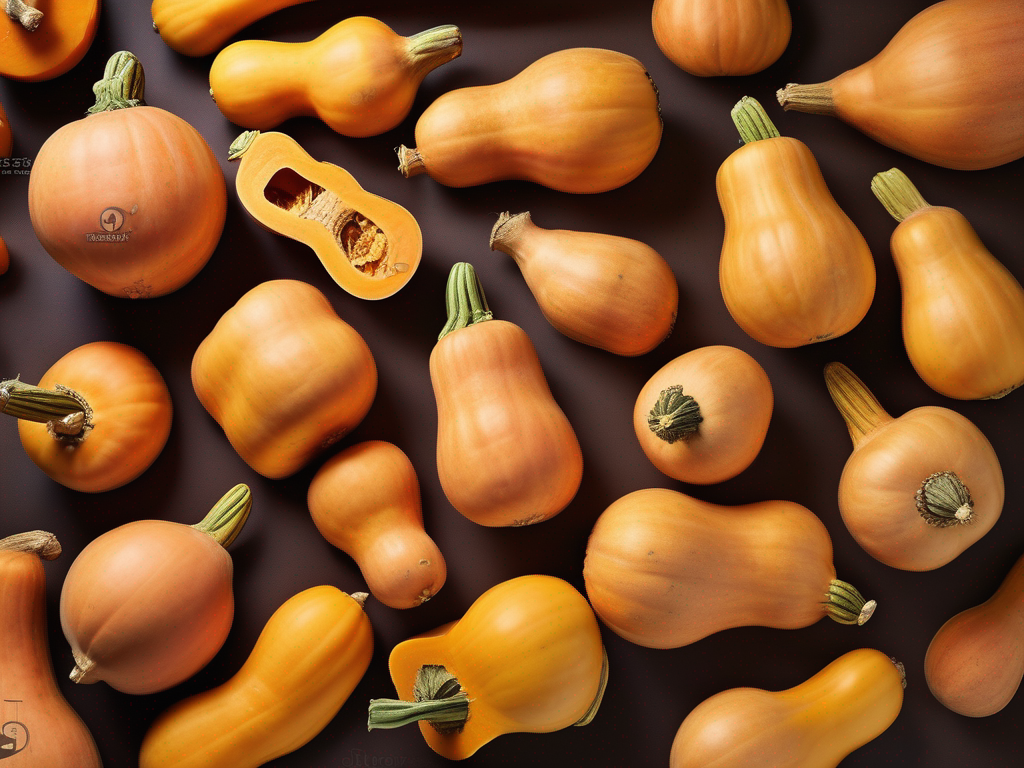
The Ultimate Guide to Prolonging the Freshness of Cut Butternut Squash
Get Your Free Food Safety Cheat Sheet
30 most common foods with instant answers. Print it and stick it on your fridge—completely free!
The Ultimate Guide to Prolonging the Freshness of Cut Butternut Squash
Butternut squash is a versatile and nutritious vegetable that can be enjoyed in a variety of dishes, from soups and stews to roasted vegetables and salads. However, once you've cut into a butternut squash, it can be challenging to keep it fresh for an extended period. In this comprehensive guide, we'll share practical tips and safety information to help you prolong the freshness of cut butternut squash. (Butternut squash)
Understanding Butternut Squash
Butternut squash is a type of winter squash that has a sweet, nutty flavor and a vibrant orange flesh. It is rich in vitamins A and C, as well as fiber and antioxidants, making it a healthy addition to your diet. When selecting a butternut squash, look for one that feels heavy for its size, with a firm skin free of blemishes or soft spots.
Why Proper Storage is Important
Proper storage is essential to maintain the quality and safety of cut butternut squash. When exposed to air and moisture, cut vegetables can quickly spoil, leading to food waste and potential foodborne illnesses. By following the tips outlined in this guide, you can extend the shelf life of cut butternut squash and enjoy its delicious flavor for longer.
Tips for Prolonging the Freshness of Cut Butternut Squash
1. Store in the Refrigerator
After cutting into a butternut squash, store the remaining pieces in the refrigerator to slow down the rate of spoilage. Place the cut squash in an airtight container or resealable plastic bag to prevent moisture loss and protect it from other odors in the fridge.
2. Use Proper Handling Techniques
When handling cut butternut squash, wash your hands thoroughly with soap and water before and after touching the vegetable. Use a clean cutting board and knife to prevent cross-contamination with other foods. Remember to sanitize your kitchen surfaces after preparing the squash.
3. Keep the Skin Intact
To maintain the freshness of cut butternut squash, leave the skin on the pieces you are not using immediately. The skin acts as a protective barrier, helping to retain moisture and prevent the flesh from drying out. Wrap the cut squash tightly with plastic wrap to further seal in moisture.
4. Utilize Freezing Techniques
If you have more cut butternut squash than you can use within a few days, consider freezing the excess for later use. To freeze cut squash, blanch the pieces in boiling water for a few minutes, then plunge them into ice water to stop the cooking process. Drain the squash well, pack it into freezer-safe bags or containers, and label with the date before placing it in the freezer.
5. Monitor for Signs of Spoilage
Even with proper storage, cut butternut squash can still spoil if not used promptly. Check the squash regularly for any signs of mold, discoloration, or off odors. If you notice any of these indicators, discard the squash immediately to prevent foodborne illness.
Conclusion
By following these practical tips for storing cut butternut squash, you can prolong its freshness and enjoy its delicious flavor in your favorite recipes. Remember to prioritize food safety by using proper handling techniques and monitoring the squash for signs of spoilage. With the right storage methods, you can make the most of this nutritious and versatile vegetable. [Learn more about the benefits of butternut squash](/food/butternut squash) and experiment with new ways to incorporate it into your meals. (Butternut squash)
Related Posts
Here are some other articles you might find helpful:
Authoritative Food Safety References
These agencies and university labs inform every tip and health precaution we publish.
USDA FoodKeeper – Cold Storage Guidelines
Official refrigerator, freezer, and pantry timelines maintained by the U.S. Department of Agriculture.
Visit USDA FoodKeeperFDA Produce Safety Rule & Grower Guidance
Field-to-fridge handling practices that prevent contamination of fruits, vegetables, and leafy greens.
Visit FDA Produce SafetyCDC Foodborne Illness Prevention Hub
Surveillance-backed guidance on pathogens, symptoms, and steps to reduce foodborne illness risk.
Visit CDC Food SafetyUC Davis Postharvest Technology Center
University research detailing optimal storage atmospheres for produce after harvest.
Visit UC Davis PostharvestPenn State Extension – Home Food Preservation & Safety
Peer-reviewed extension bulletins on safe canning, chilling, and reheating practices.
Visit Penn State ExtensionGet Your Free Food Safety Cheat Sheet
30 most common foods with instant answers. Print it and stick it on your fridge—completely free! Want more? Upgrade to the complete guide with 70+ foods.
Scan your food directly and get instant safety info using our AI-powered camera feature.